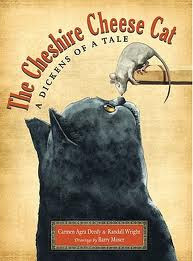Mouseheart, by Lisa Fiedler, generously illustrated by Vivienne To (Simon and Schuster, middle grade, in stores May 20, 2014) is the fast-paced story of a mouse of destiny set in the subterranean depths of New York city. I'm happy to be able to offer a giveaway along with my own thoughts--scroll down for details.
When I am about to read a book in which a mouse is the hero, I ask myself my "mouse questions" (which I am actually formulating right now for the first time--they have previously been an amorphous swirl, because that's how I think). If the hero of a book were to be a fish, "fish" could be substituted for "mouse," etc.
1. If all the mice and other animal characters were people, would the plot be appreciably different? Would my emotional response be any different?
2. And following from that, is there any "mousiness" to the main character? If I were never told he or she was a mouse, would I suspect that there was something not-human going on? Does the fact that the rodents wear clothes and fight with swords distract me?
Maybe these questions wouldn't actually work for fish, because, you know, water. But the basic point of them is that if I am to read a book in which a mouse is a hero, I want there to be some point to the mousiness. And so, as I read
Mouseheart, I pondered these questions.
Here is the gist of the story:
Down below New York city is Atlantia, small, gated utopia of rats. It is guarded by cats, whose queen has signed a treaty with the emperor of the rats. Up above is a pet store, from which three young mouse siblings escape. One of these, Hopper, our hero, falls into the New York subway system, where he is taken under the paw of a young, swashbuckling rat who turns out to be the utopia's prince.
Hopper wants to find both his siblings and a safe home, but he finds himself drawn deep into the world of those who want to bring down Atalantia. He does not want to be drawn into revolution and rebellion--he wants to believe in the utopia. Nor is Hopper enthusiastic when the rebel mice hail him as a chosen mouse of destiny, savior of the rebellion (that bit about him believing in the utopia makes being a hero of the rebel cause tricky). But destiny can be hard to avoid...especially once you realize that the utopia comes with a terrible, terrible price (that whole bit about the treaty between the cats and the rats? It has a Dark Underside of a not unexpected, biologically-sound, sort).
So the fact that the main characters are rodents is absolutely essential for the plot to work, and to have powerful emotional heft when the Dark Underside is revealed. And allowing the rodents and cats to be rather advanced, viz trappings of civilizations, lifted the above animal adventure into the territory of fantasy epic, that I thinks adds to its kid appeal. Perhaps more could have been made of the physical qualities that distinguish rodents from people (like keen sense of smell, and the use of whiskers), but I felt I was at least getting a mouse-perspective on the New York subway system, which made up for that. Though there was a sense that the characters were simply small people, it was not so much an issue that it broke my suspension of disbelief.
Mouseheart is one I'd recommend to readers seeking an animal-based
entrée into the world of false utopias--it has engaging main characters, dark undercurrents, and a vivid setting. That being said, I do have a rather strong reservation about making a blanket recommendation. In the very first scene, the actions of a mouse and a rat end up causing a hostile cat's eye to be graphically impaled on a spike. I think many readers, especially those who love cats, will put the book down right there. I myself was worried that there would be more graphic violence, but this was the worst, and was much more horrible than the confrontations to come (also involving the dark side to rodent/cat relationships, but less specifically so).
I have another minor reservation, that's more something that didn't work for me personally--Hopper's sister ends up messing up their escape from the pet shop because she can't control the desire to bite its owner. But she blames Hopper, and he just takes it. This made her totally unsympathetic, and Hopper seem a bit wet.
In any event,
Mouseheart has gotten excellent reviews from
Publishers Weekly-- "For those who love an underdog and some romping good battles, Fiedler thoroughly entertains" and from Kirkus--"Riddled with surprises, the fast-paced, complex plot features a host of vivid, memorable rodent and feline characters.... Another stalwart mouse with a brave heart will win fans in this captivating underground adventure." I agree that many young readers will enjoy this lots (just so long as they aren't too terribly fond of cats.....).
ABOUT THE AUTHOR
Lisa Fiedler is the author of several novels for children and young adults. She divides her time between Connecticut and the Rhode Island seashore, where she lives happily with her very patient husband, her brilliant and beloved daughter, and their two incredibly spoiled golden retrievers.
ABOUT THE ILLUSTRATOR
Vivienne To has illustrated several books, including The Underland Chronicles by Suzanne Collins and the Randi Rhodes, Ninja Detective series by Octavia Spencer. As a child, she had two pet mice escape. She currently lives in Sydney, Australia, with her partner and her ginger cat. Visit her at VivienneTo.com.
Courtesy of the publisher, I'm happy to offer this great giveaway of
Mouseheart plus
The Search for WondLa and
Belly Up! Just leave a comment (perhaps sharing your own favorite mouse fantasy) between now and 8:30 am Monday morning and you'll be entered!











